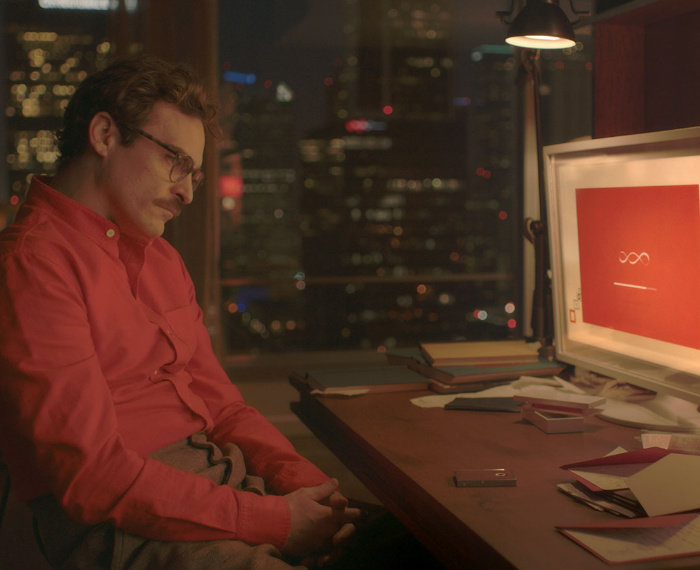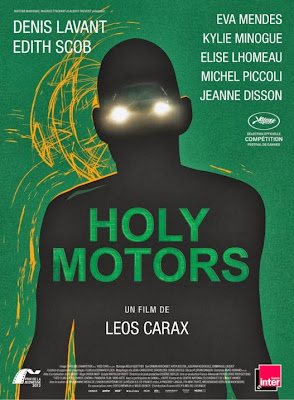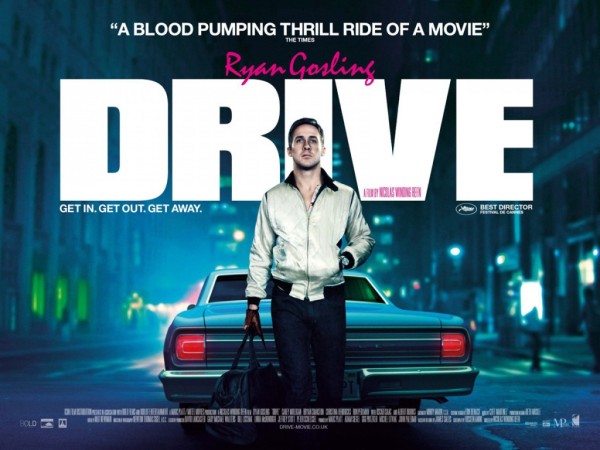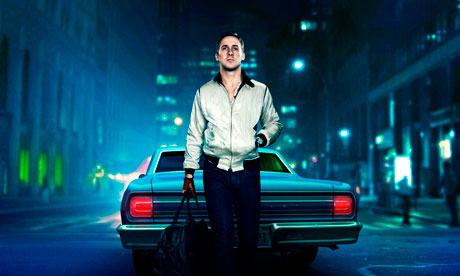Homage
Julianne Escobedo Shepberd from Rolling Stone wrote that Ferreira's "songs are catchy, but they’re also thickly glazed with fuzz and synths, evoking influences like Suicide, Siouxsie Sioux and the krautrock group Harmonia". Karolina Ramos from The GW Hatchet compared Ferreira to New Zealand recording artist Lorde, both of whom she felt "tackle contemporary love, desire and insecurity with depth, composure and frankness." She compared her musical style to 1980s pop music, and noted that "her throaty, sultry vocals call to mind Lana del Rey, abandoning brightness and vivacity for a colder tone."
Ferreira said of the song (You're Not The One):
"The production is super-inspired by Low by David Bowie [...] I wanted to make a super-poppy version. Like not when you're rolling up your car windows because you don't want anyone to know you're listening to it. Like trying to hide it in your iTunes. Ariel had the idea. People say it sounds like Siouxsie Sioux. I guess the song was originally about a relationship when you're not chasing after them. You know they're kind of fucked up. It's like a game of cat and mouse. They're interested but not interested enough and it's not fair. That's basically what it should be called, 'It's Not Fair.'"
Ferreira's earlier work incorporated elements of dance-pop and synthpop, most notably seen in tracks from As If! and Ghost. As her career progressed, Ferreira more frequently experimented with elements of indie rock and indie pop, which were commonly heard in Night Time, My Time. Ferreira has cited Madonna, Prince, Gwen Stefani, Alice Cooper, Nancy Sinatra, Cat Power, Britney Spears, and The Runaways as musical influences.
Pastiche
Does your chosen artist use other peoples music in order to mock it and its fans? Are they attempting to damage the ‘authority’ of a style of music?
-
Bricolage
"Ferreira's Eighties-weaned diva pop recalls no-nonsense Nineties alt-rockers like PJ Harvey and Shirley Manson, setting love-wracked disclosures to grungy guitar static, electronic gauze and computer-groove churn." Rolling Stone
Musically, Night Time, My Time differs from Ferreira's extended play Ghost. Drawing inspiration mainly from 80s pop and 90s grunge, the LP distances itself from the "relaxed" and "developed" sound found in Ghost. A late 1970s art rock influence is also prominent in Night Time, My Time. Additionally, "coin-slot video game samples" are often heard in album tracks. Lyrically, Ferreira disscusses the "familiar" themes of heartbreak and identity in ways that, according to Lauren Martin from Fact (UK), are "refreshed and engaging". The atmosphere of the album evoked records of Best Coast, Garbage and Siouxsie and the Banshees with "fuzzy, distorted tracks".
The album opens with "Boys", which "employs ringing blasts of guitar" and show Ferreira "optimistic about love". "Ain't Your Right" is a "cynical break-up-and-make-up anthem", and "24 Hours" was deemed a "sadder, somber take" on the song "Teenage Dream" by American singer-songwriter Katy Perry, and is a pop song with a "dreamy" and new wave music-inspired instrumental. "Autobiographical anger" is emulated on the "major rock anthem", "Nobody Asked Me (If I Was Okay)", that channels Ferreira's "frustrations". Fifth track, "I Blame Myself", sees Ferreira "spit[ting] self-doubt and frustrations" and is a "song about the power of vulnerability", alongside "bubbly melodies" and "driving beats". "Omanko", (Japanese slang for the vagina), has an indie rock-based sound, and in the song, Ferreira goes "full-on Alan Vega". It is followed by the album's first single, "You're Not the One", that's been described as a "masterfully carved" pop record with "equal parts self-loathing and redemption", and as blending Ferreira's "unmistakable early-90s pop sensibility" with "something decidedly harder to place". Eighth song on the album, "Heavy Metal Heart", is an electro rock ballad, which Ferreira sings with an "art-damaged" voice. "Kristine" contains ska undertones and sees Ferreira singing about "lifestyle posturing", while "I Will" demonstrates the singer's self-confidence, "taunt[ing] those who expect her to act a certain way or be deferential". The "Robyn-esque" song "Love in Stereo" is "new wave-tinged", while the title track (and closing song of the album) has a "distorted" and "strange jarring beat".
Intertextual References
Ferreira titled the album after lines spoken by Laura Palmer in David Lynch's Twin Peaks: Fire Walk with Me (1992), and the lyrics to the album's title track are almost entirely lifted from dialogue in the film.
"You're Not the One" was serviced as Night Time, My Time's lead single on 24 September 2013. Its music video, paying visual homage to 1983 film The Hunger and set in a high-fashion night club, was released on the same day.
Simulacrum
The cover art for Night Time, My Time, photographed by Argentine film director Gaspar Noé at Hotel Amour in Paris, was revealed by Ferreira on October 10, 2013. The singer appears topless in the artwork, wearing a cross necklace inside a shower, with a "demented" facial expression. While defending the cover, Ferreira described it as "raw" and revealed that she had two options for the album's cover to pick from. Aside from the actual Night Time, My Time cover, the other image that Capitol Records wanted to use depicted Ferreira with long blonde hair, while sitting on a bed wearing a black dress.
After establishing a friendship with recording artist Miley Cyrus in 2013, Gregory E. Miller from New York Post noted that the media and general public would continue "following her every move". Ferreira commented that "[Miley’s] obviously way bigger and all eyes [are] on her, but I feel like we’re kind of going through a similar thing where everyone’s trying to say that we’re trying to make ourselves objects, but really, everyone else is making it more like that — sensationalizing sex and reading into things. It’s nice to have someone that gets it." Ferreira had also generated a minor controversy after appearing topless on the cover for Night Time, My Time, to which she responded "there’s nothing about that photo that’s pornographic; we came on this earth nude."
Consumption
Night Time, My Time was first released as a digital download on October 29, 2013. A physical release as a compact disc was eligible for pre-order on Amazon.com, although for unknown reasons, it was indefinitely postponed. In addition, the vinyl edition of the record was not ready for release on the album's street date, as confirmed by Ferreira, who criticized Capitol Records and affirmed that she'd be producing vinyl copies of the record herself, which were sold through her online store. The album was later pressed on vinyl by Capitol Records and released on January 28, 2014, in addition to CD copies, including a limited edition CD combination package which included Ferreira's Ghost EP (2012).
After the release of Night Time, My Time: B-Sides Part 1, an online shopping page for the singer revealed various editions of the album available for purchase, including a green translucent vinyl and a CD. Furthermore, a bundle including the compact disc, a digital download and a poster was also revealed. On November 27, 2013, Ferreira revealed on her Twitter account that all physical Night Time, My Time copies pre-ordered had been shipped.
On late February 2014, the album started being sold on Amazon.com as a limited CD edition, which includes the original album and the Ghost EP, and as a double vinyl LP.
Creation
Night Time, My Time:
Sky Ferreira – vocals/songwriting
Chris Kasych – Pro Tools
Emily Lazar – mastering
Rich Morales – assistant mastering
Daniel Nigro – additional vocals, guitar
Justin Raisen – additional vocals, co-production, guitar, keyboards
Garrett Ray – drums
Ariel Rechtshaid – additional vocals, bass, guitar, keyboards, production, recording
Nick Rowe – editing
Mark Santangelo – assistant engineering
David Schiffman – mixing
"You're Not the One" is written by Ferreira, Ariel Rechtshaid, Justin Raisen, and Daniel Nigro, and produced by Rechtshaid and Raisen.
"Everything Is Embarrassing" was written by Ferreira, Dev Hynes, and Ariel Rechtshaid, while the latter two produced the track. Hynes, a friend of Ferreira, had sent her a demo of the song, which was inspired by a failed relationship; Ferreira then modified the original lyrics and structure along with Rechtshaid.
"Red Lips" was written and produced by Greg Kurstin, with additional songwriting provided by Shirley Manson.
Performance
A music video for "Red Lips" from the "Ghost" EP was directed by Terry Richardson. She went into its filming open-minded in regards to its concept, and ultimately agreed with the creative direction that Richardson proposed. The final product was premiered through Vevo on July 13, 2012. The clip sees Ferreira, dressed in nude-colored underwear, applying lipstick on her entire face, and is interspersed with footage of its co-star, the spider "Toby the Tarantula", crawling across her body. She stated that her wardrobe was intended to compliment the simplistic nature of the music video, rather than an attempt to create sex appeal.
Critics directed their commentaries of the music video towards Ferreira's increasingly risqué public persona, shifting from the more innocent image with which she launched her career. A writer from MuuMuse provided a favorable review, comparing it to the visuals for "Criminal" by Fiona Apple and summarizing that "Sky Ferreira is cooler than anything you and I could ever be." Becky Bain from Idolator stated that the appearance of Toby the Tarantula was "somehow nowhere near as disconcerting as the image of Sky, looking washed out with platinum hair against a white background, crazily painting her face with a tube of red lipstick." Michael Cragg of The Guardian felt that Ferreira's friendship with the controversial Richardson showcased a "shift away from the pop princess she felt she was being moulded into", and commented that the spider was "not for the faint-hearted". It differs from the previous electropop styles displayed in her earlier works, which was deliberately done in avoidance of being branded in a similar fashion as recording artist Britney Spears.
A music video for the album's title track, "Night Time, My Time" directed by Grant Singer and released on 27 November 2013, sees Ferreira wearing a variety of wigs and lingerie. Natasha Stagg of V wrote that, in the video, Ferreira "embraces the title she's been deemed by dressing in provocatively infantile accessories" and "cleverly [delivers] the junkie role back in her detractors' faces."
Influence
Andrew Unterberger stated that "through a variety of singles, EPs, guest features and live appearances, Sky has proven herself one of the most talented singers, creative songwriters and savvy collaborators currently working in the genre", but blamed "bad marketing, label disputes and her own perfectionism" for the extended delay of Night Time, My Time; he also stated that the repeated renaming of the record itself "should give you some idea of the musical identity issues she’s suffered over the years."

























.jpg)
.jpg)












